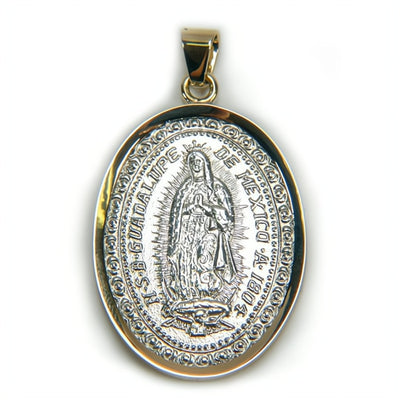New Testament Books in Order: A Complete Guide to Their Structure and Meaning
Introduction
The New Testament is the cornerstone of Christian belief. It contains the teachings of Jesus Christ, the history of the early Church, and profound theological insights. Understanding the order of its books helps believers navigate its message more effectively, providing historical and spiritual context.
This article explores the books of the New Testament in order, explaining their structure, themes, and significance in Catholic tradition. Whether deepening your faith, studying Scripture, or looking for a guide to understanding the Bible, this resource will serve as a comprehensive reference.
1. The Structure of the New Testament
The New Testament consists of 27 books, traditionally divided into four main sections:
-
The Gospels (Matthew, Mark, Luke, John) – Accounts of Jesus' life and teachings.
-
Acts of the Apostles – The history of the early Church and the spread of Christianity.
-
The Epistles (Letters) – Writings from the apostles addressing various Christian communities and theological topics.
-
The Book of Revelation – A prophetic vision of the end times and God’s ultimate victory.
2. The New Testament Books in Order and Their Meaning
A. The Gospels (4 Books)
The first four books of the New Testament provide narratives about Jesus Christ’s life, death, and resurrection.
-
Matthew – Written for a Jewish audience, emphasizing Jesus as the fulfillment of Old Testament prophecy.
-
Mark – The shortest and earliest Gospel, highlighting Jesus’ ministry and miracles.
-
Luke – A detailed account focused on Jesus’ compassion and the role of the Holy Spirit.
-
John – A deeply theological Gospel emphasizing Jesus as the Son of God.
B. Acts of the Apostles (1 Book)
-
Acts of the Apostles – Written by Luke, this book details the establishment of the early Church, the spread of the Gospel, and the works of the apostles, primarily Peter and Paul.
C. The Pauline Epistles (13 Books)
The Apostle Paul wrote letters to various churches and individuals, addressing theological and practical issues. 6. Romans – A profound theological letter about salvation through faith in Christ. 7. 1 Corinthians – Addressing divisions in the church and Christian conduct. 8. 2 Corinthians – A defense of Paul’s ministry and encouragement for believers. 9. Galatians – Emphasizing justification by faith, not by the law. 10. Ephesians – Teaching on unity in Christ and the armor of God. 11. Philippians – A letter of joy and encouragement in faith. 12. Colossians – Focused on Christ’s supremacy over all things. 13. 1 Thessalonians – Encouragement about Christ’s second coming. 14. 2 Thessalonians – Further teaching on Christ’s return and perseverance. 15. 1 Timothy – Instructions for church leadership and sound doctrine. 16. 2 Timothy – Paul’s final letter, urging Timothy to remain faithful. 17. Titus – Guidance on church organization and good works. 18. Philemon – A personal letter about forgiveness and reconciliation.
D. The General Epistles (8 Books)
These letters, written by various apostles, offer guidance for Christians in different circumstances. 19. Hebrews highlights Christ as the perfect high priest and mediator. 20. James emphasizes faith in action and righteous living. 21. 1 Peter – Encouragement for suffering Christians. 22. 2 Peter – Warnings against false teachers and perseverance in faith. 23. 1 John – Teaching on love, truth, and eternal life. 24. 2 John – A short letter emphasizing truth and love. 25. 3 John – A personal letter about hospitality in the Church. 26. Jude – A warning against false teachings and a call to faithfulness.
E. The Book of Revelation (1 Book)
-
Revelation – A prophetic vision of the end times, God’s final victory over evil, and the new heaven and earth.
3. Why Understanding the Order of the New Testament Matters
-
Historical Context – Knowing the order helps understand the chronological and theological development of early Christianity.
-
Doctrinal Clarity – Recognizing the themes and teachings in each book strengthens faith and biblical comprehension.
-
Liturgical Importance – The Church incorporates passages from these books into Mass readings and teachings.
4. How to Deepen Your Understanding of the New Testament
-
Daily Scripture Reading – Follow a reading plan to engage with all books.
-
Use a Catholic Study Bible – A Bible with footnotes and commentary enhances understanding.
-
Participate in a Bible Study Group – Discussing Scripture with others provides new insights.
-
Pray with Scripture – Meditative reading, like Lectio Divina, brings spiritual growth.
5. The New Testament in Catholic Tradition
The Catholic Church considers the New Testament sacred Scripture in its teachings and liturgy. The Mass readings frequently include passages from the Gospels, Acts, Epistles, and Revelation, reinforcing their significance in daily worship.
Catholic tradition also emphasizes the connection between the Old and New Testaments, showing how Christ fulfills the prophecies and promises made to Israel.
6. Explore Catholic Gifts Inspired by Scripture at Guadalupe Gifts
At Guadalupe Gifts, we celebrate the richness of the New Testament through our collection of Catholic gifts. From jewelry to devotional art, our products help keep the Word of God close to your heart.
Top Catholic Church-Approved Resources for Further Reading:
About Guadalupe Gifts
Guadalupe Gifts is dedicated to offering high-quality, authentic Catholic gifts and jewelry. Our mission is to help believers express their faith through meaningful gifts that reflect the beauty and depth of the Catholic tradition.
Find the perfect faith-filled gift at Guadalupe Gifts.




















Leave a comment